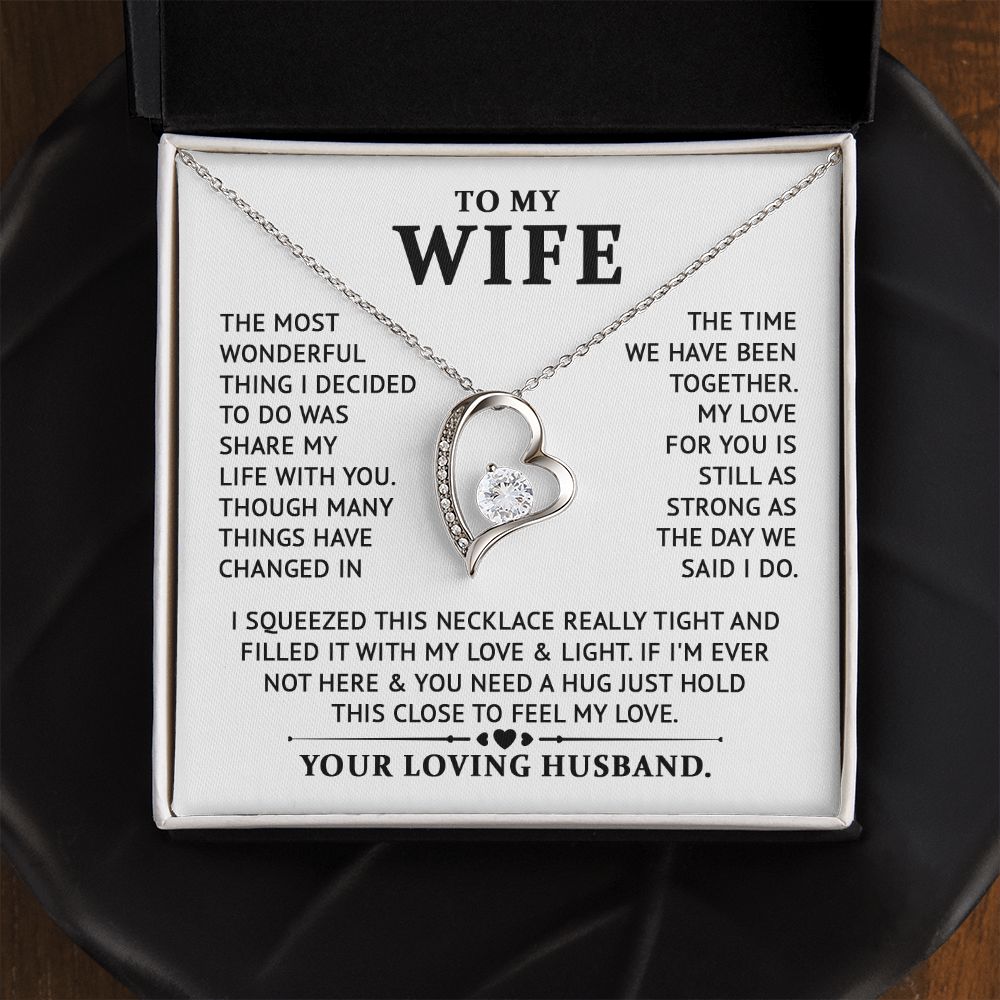Can a Necklace Cause Hives?
If you have ever experienced hives, then you know how uncomfortable they can be. Hives are red, itchy welts that can appear anywhere on your body. They are often caused by an allergic reaction to something you have come in contact with.
But did you know that a necklace could be the cause of your hives? Necklaces are often made with metals such as nickel or copper. Some people are allergic to these metals and can develop hives when they come in contact with them.
If you have a metal allergy, it is important to avoid wearing jewelry made with these metals. There are also some types of fabric necklaces that can cause hives. The fabric may contain chemicals or dyes that you are allergic to.
If you develop hives after wearing a particular necklace, try avoiding that type of necklace in the future.
How to Treat Jewelry Rash?
If you've ever had a jewelry rash, you know how annoying and painful it can be. A jewelry rash is a form of contact dermatitis that occurs when your skin comes into contact with certain metals or other materials.
Jewelry rashes can be difficult to treat, but there are some things you can do to help relieve the symptoms and get rid of the rash.

One of the best things you can do for a jewelry rash is to avoid wearing the offending piece of jewelry. If you must wear it, try to keep the area covered with a bandage or clothing so that it doesn't come into direct contact with your skin.
You can also try using a topical corticosteroid cream or ointment to help relieve itching and inflammation. If the rash is severe, you may need to see a doctor for oral corticosteroids or other treatments.
In most cases, jewelry rashes will eventually go away on their own with time. However, if the rash is severe or persists for more than a few days, it's important to see a doctor so that they can rule out any other possible causes.
How to Treat Nickel Allergy?
If you have a nickel allergy, you're not alone. Approximately 10-12% of the population is allergic to nickel. While there's no cure for nickel allergy, there are treatments that can help lessen your symptoms and make living with this condition more manageable.
Nickel allergy is an immune system reaction to exposure to nickel. Nickel is a type of metal that's commonly found in jewelry, coins, keys, buttons, zippers, and other metal objects.
It's also present in some foods (like chocolate), cosmetics (like eye shadow), and medications (like aspirin). When someone with a nickel allergy comes into contact with this metal, their body produces histamine and other chemicals in an effort to protect itself.
This can cause a range of symptoms including:
- Rash or hives
- Redness or swelling
- Blisters or bumps
- Itching or burning sensation
- Watery eyes or runny nose
In severe cases, contact with nickel can also lead to difficulty breathing or swallowing. If you experience any of these symptoms after coming into contact with nickel, it's important to see a doctor as soon as possible. They can confirm whether or not you have a nickel allergy and help develop a treatment plan.
There's no cure for nickel allergy, but there are treatments that can help lessen your symptoms and make living with this condition more manageable. The first step is avoiding exposure to nickel as much as possible.
This means removing any objects made from this metal from your home and workplace and being careful about what products you use on your skin (look for products that are hypoallergenic or labeled "nickel-free").
You should also avoid eating foods that contain high levels of nickel like soybeans, lentils, chocolate, oats, cashews, peanuts ,and certain grains. If avoidance isn't possible or doesn't provide enough relief from your symptoms ,your doctor may prescribe medication like corticosteroids ,antihistamines ,or immunosuppressants
These drugs can help reduce inflammation and relieve itching ,swelling ,and other uncomfortable symptoms.
In severe cases ,oral or injected corticosteroids may be necessary. If you have trouble breathing ,you may need Epinephrine (an emergency injection) .
Jewelry Rash on Neck: What to do?
If you’re experiencing a jewelry rash on your neck, don’t fret! There are a few simple things you can do to treat the rash and get rid of it for good.
First, try washing the area with a mild soap and cool water. This will help to remove any irritants that may be causing the rash.
If the rash is still present after washing, you may need to apply a topical steroid cream or ointment. Be sure to follow the directions on the package carefully.
If the rash is painful or seems to be getting worse, you should see a doctor or dermatologist. They can prescribe stronger medication to clear up the rash quickly. With proper care, most jewelry rashes will clear up within a week or two.
In rare cases, however, the rash may lead to an infection. If you see signs of an infection (redness, swelling, pus), seek medical attention immediately.
Fake Jewelry Rash on Neck
Most people have heard of nickel allergy, but did you know that you can also be allergic to fake jewelry? It's true!
Many costume jewelry pieces are made with metals that contain nickel and other allergens, and when they come into contact with your skin, they can cause a nasty rash.
If you've ever developed a red, itchy rash after wearing a necklace or earrings, chances are you're allergic to the metal in the jewelry. The good news is that there are some things you can do to avoid this problem in the future.
First, make sure to only buy costume jewelry that is made with hypoallergenic metals. This means that the jewelry won't contain any nickel or other allergens that could trigger a reaction.
Second, always clean your fake jewelry before wearing it. This will help remove any potential irritants from the surface of the metal.
Finally, don't forget to take off your costume jewelry before going to bed! Sleeping in your allergy-causing earrings or necklace is a recipe for disaster.
What Does an Allergic Reaction from a Necklace Look Like?
If you're allergic to the metal in your necklace, you may develop a rash where the jewelry is in contact with your skin. The rash may be red, itchy, and raised. You may also have a burning or stinging sensation.
In severe cases, the skin can blister or swell. If you have an allergy to nickel, you may only develop a rash when your skin is exposed to nickel for long periods of time, such as from wearing jewelry all day.

When most people think of an allergic reaction, they picture a hive-like rash or swelling around the eyes and lips. But did you know that you can also have an allergic reaction to jewelry? Jewelry allergies are actually quite common, and they can cause a wide range of symptoms.
One of the most common symptoms is a rash or redness around the point of contact. This is often accompanied by itchiness, dryness, and flaking skin. In more severe cases, you may also experience blistering, swelling, and even rawness.
If you suspect that you have a jewelry allergy, it's important to see a doctor for confirmation. They will likely perform patch testing, which involves placing small amounts of Allergens on your skin to see if you have a reaction.
Once diagnosed, the best way to treat a jewelry allergy is to avoid wearing the offending piece of jewelry. If that's not possible, you can try coating the jewelry in a thin layer of clear nail polish or wearing it only for short periods of time.
With proper care, you can still enjoy your favorite pieces even if you have a jewelry allergy.
Why Do Necklaces Give Me a Rash?
Necklaces can give you a rash for a number of reasons. The most common reason is that the necklace is made of a material that doesn't agree with your skin. Nickel is a common culprit, as are other metals like copper and brass.
If you have sensitive skin, it's best to stick to necklaces made of hypoallergenic materials like stainless steel, titanium, or gold. Another possible cause of a necklace-related rash is an allergic reaction to the perfume or other chemicals used in the making of the jewelry.
If you're prone to allergies, it's best to choose fragrance-free necklaces or those made with natural ingredients.
Finally, if you wear your necklace too tight, it can rub against your skin and cause irritation. This is especially true if the chain is made of a rough material like metal.
If your necklace is leaving you with a rash, try loosening it up or wearing it on top of a shirt to create a barrier between your skin and the jewelry.
Why Am I Suddenly Allergic to My Necklace?
If you've developed a sudden allergy to your necklace, there are a few possible explanations. It could be that you're allergic to the metal in the necklace, or it could be that you're allergic to something that's come into contact with the necklace.
If you think you might be allergic to the metal, try wearing a different type of jewelry made from different materials.
If you think you might be allergic to something that's come into contact with the necklace, try cleaning it with a mild soap and water solution. If your allergy is severe, you may need to see an allergist for further testing and treatment.
Can Metals Cause Hives?
There are a few different ways that metals can cause hives. The first is when the metal comes into direct contact with the skin. This can happen if you are wearing jewelry made of a certain metal or if you have been exposed to metal shavings or dust.
If this is the case, you may notice hives developing within minutes to hours after exposure. The second way that metals can cause hives is when they are ingested. This can happen if you eat food that has been cooked in a pot or pan made of a certain metal or if you drink from a metal water bottle.
In this case, it may take days or weeks for the hives to develop. If you think that metals may be causing your hives, it is important to see your doctor so they can determine the exact cause and recommend treatment options.
Conclusion
There are a lot of different things that can cause hives, and sometimes it can be hard to figure out what the trigger is. For some people, hives can be caused by wearing certain jewelry. In particular, necklaces made with nickel or other metals can cause an allergic reaction that leads to hives.
If you notice that you always get hives in the same spot when you wear a certain necklace, it's probably time to switch to a different type of jewelry.























